
The syllabus for FIN 420: Financial Planning and Wealth Management as instructed at James Madison University.
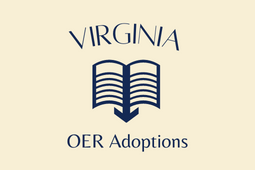
This endorsement is applied to OER adopted by Virginia higher education professionals for their courses.
Applied to OER adopted by Virginia higher education professionals for their courses.

The syllabus for FIN 420: Financial Planning and Wealth Management as instructed at James Madison University.
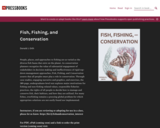
Fish, Fishing, and Conservation is a 389-page, peer-reviewed open textbook intended for undergraduate students who are exploring majors in Fish & Wildlife. It is also relevant to a general audience or for use in courses which explore social and ethical aspects of fish, fishing and conservation.
People, places, and approaches to fishing are as varied as the diverse fish fauna that exist on the planet. As conservation planners recognize the value of substantial engagement of stakeholders in decision making and ineffectiveness of rigid top-down management approaches, Fish, Fishing, and Conservation asserts that all peoples must play a role in conservation. Through case studies, engaging narrative and graphics, and exercises, the text explores major motivations for fishing and non-fishing related values, responsible fisheries practices, the rights of all people to decide how to manage and conserve fish, their habitats, and how they are utilized in the context of overfishing as a pressing global problem for which appropriate solutions are not easily found nor implemented. Introductory chapters examine fish, fishing, and why fish matter and examine the role of values in driving conservation initiatives. Fish and their unique sensory capabilities are described along with a review of recent studies to examine issues of pain, sentience, and learning in fishes living in a foreign, underwater world. The text incorporates these new findings in conservation and management leading readers to evaluate and adopt suitable approaches to ethical reasoning which consider the welfare needs of wild and cultured fishes. Later chapters focus on the role of gender in fishing, conservation organizations, recreational fishing, and a focus on specific fisheries that reveal the principles of conservation and management as they play out in major controversies. Additionally, the textbook contains audio recordings of professional profiles by Virginia Tech students. These are linked at the beginning of each end-of-chapter Professional Profile. Audio recordings are also available on Spotify: https://open.spotify.com/show/06SnqAigflPXUgGNIHZxAX?si=Sljj3q9NRyOcclbmEE3npA
Please let us know if you are reviewing or adopting this book https://bit.ly/fishandconservation_interest
Table of Contents
1. Fish, Fishing, and Why They Matter
2. Values Drive Fish Conservation
3. Sensory Capabilities of Fish
4. Ethical Reasoning and Conservation Planning
5. Pain, Sentience, and Animal Welfare
6. Public Aquariums and Their Role in Education, Science, and Conservation
7. Gender and Fishing
8. Angling and Conservation of Living Fishy Dinosaurs
9. Fly Fishing’s Legacy for Conservation
10. Recreational Fishing and Keep Fish Wet
11. Integrating Fishers in the Management of Arapaima
12. Conserving Tunas: The Most Commercially Valuable Fish on Earth
13. Groupers and Spawning Aggregations
14. Menhaden and Forage Fish Management
15. Takeaways for Successful Fish Conservation

In this survey text, readers will explore the foundations of American education through a critical lens. Topics include the teaching profession, influences on student learning, philosophical and historical foundations, structures of schools, ethical and legal issues, curriculum, classroom environment, and the path forward.
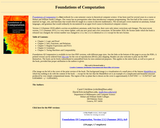
Foundations of Computation is a free textbook for a one-semester course in theoretical computer science. It has been used for several years in a course at Hobart and William Smith Colleges. The course has no prerequisites other than introductory computer programming. The first half of the course covers material on logic, sets, and functions that would often be taught in a course in discrete mathematics. The second part covers material on automata, formal languages, and grammar that would ordinarily be encountered in an upper level course in theoretical computer science.
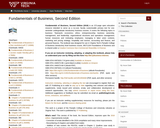
Fundamentals of Business, Second Edition (2018) is an 372-page open education resource intended to serve as a no-cost, faculty customizable primary text for one-semester undergraduate introductory business courses. It covers the following topics in business: Teamwork; economics; ethics; entrepreneurship; business ownership, management, and leadership; organizational structures and operations management; human resources and motivating employees; managing in labor union contexts; marketing and pricing strategy; hospitality and tourism, accounting and finance, and personal finances. The textbook was designed for use in Virginia Tech’s Pamplin College of Business introductory level business course, MGT1104 Foundations of Business and is shared under a Creative Commons Non-Commercial ShareAlike 4.0 license.
2018 version formats include: PDF, Accessible "screen reader friendly" PDF, ePub, Mobi, XML/Pressbooks (editable), and open document format.
The Pressbooks online version (HTML) is available at: https://doi.org/10.21061/fundamentals-of-business
The 2016 version of this book includes editable MSWord files.
If you are an instructor reviewing, adopting, or adapting this textbook, please help us understand your use by filling out this form http://bit.ly/business-interest
Instructor resource sharing portal: https://www.oercommons.org/groups/fundamentals-of-business-user-group/1379
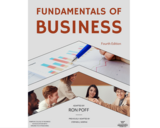
Fundamentals of Business, fourth edition (2023) is an 434-page open education resource intended to serve as a no-cost, faculty-customizable primary text for one-semester undergraduate introductory business courses. It covers the following topics in business: Teamwork; economics; ethics; entrepreneurship; business ownership, management, and leadership; organizational structures and operations management; human resources and motivating employees; managing in labor union contexts; marketing and pricing strategy; hospitality and tourism, accounting and finance, personal finances, and technology in business. The textbook was designed for use in Virginia Tech’s Pamplin College of Business introductory level business course, MGT1104 Foundations of Business and is shared under a Creative Commons Attribution Non-Commercial ShareAlike 4.0 license.
The main landing page for this book is: https://doi.org/10.21061/fundamentalsofbusiness4e
An online, interactive, accessible version of this book is available at: https://pressbooks.lib.vt.edu/fundamentalsofbusiness4e.
Information for instructors
If you are an instructor reviewing, adopting, or adapting this textbook, please help us understand your use by filling out this form: http://bit.ly/business-interest
If you are an instructor seeking supplementary resources for teaching, please join the listserv for this book and the instructor resource sharing portal: https://www.oercommons.org/groups/fundamentals-of-business-user-group/1379
Slides are available for this book: http://hdl.handle.net/10919/105157
A test bank is available by request for this book: http://hdl.handle.net/10919/93404
Please note that the test bank does not at this point reflect changes made between the third and fourth editions. The test bank is available to any instructor who has adopted Fundamentals of Business in their course.
ISBNs
ISBN (print - color): 978-1-957213-24-8
Order a print copy here (color): https://www.amazon.com/Fundamentals-Business-Color-4th-Poff/dp/1957213248
ISBN (print-black & white): 978-1-957213-25-5
Order a print copy here (B&W): https://www.amazon.com/Fundamentals-Business-black-white-4th/dp/1957213256
ISBN (PDF): 978-1-957213-21-7
ISBN (Pressbooks): 978-1-957213-23-1
Pressbooks: https://pressbooks.lib.vt.edu/fundamentalsofbusiness4e
ISBN (EPUB): 978-1-957213-22-4
Instructors reviewing, selecting or adapting the text are encouraged to register their use by filling out this form in order to stay up to date regarding new volumes and editions, supplements, newly issued print versions, errata, and collaborative development or research opportunities. You may submit comments or report errors using this form.
Report an error: http://bit.ly/business-feedback
This work is published by Pamplin College of Business in association with Virginia Tech Publishing. Funding and technical assistance for this project was provided by the University Libraries' Open Education Initiative.
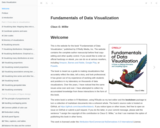
The book is meant as a guide to making visualizations that accurately reflect the data, tell a story, and look professional. It has grown out of my experience of working with students and postdocs in my laboratory on thousands of data visualizations. Over the years, I have noticed that the same issues arise over and over. I have attempted to collect my accumulated knowledge from these interactions in the form of this book.
The entire book is written in R Markdown, using RStudio as my text editor and the bookdown package to turn a collection of markdown documents into a coherent whole. The book’s source code is hosted on GitHub, at https://github.com/clauswilke/dataviz. If you notice typos or other issues, feel free to open an issue on GitHub or submit a pull request. If you do the latter, in your commit message, please add the sentence “I assign the copyright of this contribution to Claus O. Wilke,” so that I can maintain the option of publishing this book in other forms.
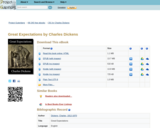
The Project Gutenberg eBook of Great Expectations, by Charles Dickens. This eBook is for the use of anyone anywhere in the United States and most other parts of the world at no cost and with almost no restrictions whatsoever. You may copy it, give it away or re-use it under the terms of the Project Gutenberg License included with this eBook or online at www.gutenberg.org. If you are not located in the United States, you will have to check the laws of the country where you are located before using this eBook.
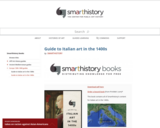
This book contains all of Smarthistory’s content for Italian art in the 1400s.

The syllabus for HIS 101: World History to 1500 as taught at James Madison University.

Historical Geology is a free online textbook for Historical Geology courses. It includes the following chapters, as well as a series of case studies, virtual field experiences, tools of the trade, and virtual sample sets.
Chapters:
What is Historical Geology?
A Brief History of Earth
Earth as a System
Earth Materials – The Rock-Forming Minerals
Earth Materials – Rocks
Plate Tectonics
Geologic time
Evolution Part I: The Theory
Taphonomy: The Science of Death and Decay
Innovations of Life Through Time: Life Finds a Way
Stratigraphy – The Pages of Earth’s Past
Using sedimentary structures to interpret ancient environments
Facies
Paleoclimatology
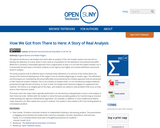
The typical introductory real analysis text starts with an analysis of the real number system and uses this to develop the definition of a limit, which is then used as a foundation for the definitions encountered thereafter. While this is certainly a reasonable approach from a logical point of view, it is not how the subject evolved, nor is it necessarily the best way to introduce students to the rigorous but highly non-intuitive definitions and proofs found in analysis.
This book proposes that an effective way to motivate these definitions is to tell one of the stories (there are many) of the historical development of the subject, from its intuitive beginnings to modern rigor. The definitions and techniques are motivated by the actual difficulties encountered by the intuitive approach and are presented in their historical context. However, this is not a history of analysis book. It is an introductory analysis textbook, presented through the lens of history. As such, it does not simply insert historical snippets to supplement the material. The history is an integral part of the topic, and students are asked to solve problems that occur as they arise in their historical context.
This book covers the major topics typically addressed in an introductory undergraduate course in real analysis in their historical order. Written with the student in mind, the book provides guidance for transforming an intuitive understanding into rigorous mathematical arguments. For example, in addition to more traditional problems, major theorems are often stated and a proof is outlined. The student is then asked to fill in the missing details as a homework problem.
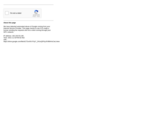
Technical writing courses introduce you to some of the most important aspects of writing in the worlds of science, technology, and business—in other words, the kind of writing that scientists, nurses, doctors, computer specialists, government officials, engineers, and other professionals do as a part of their regular work. The skills learned in technical writing courses can be useful in other fields as well, including education and social sciences.
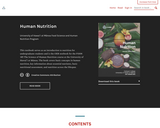
This textbook serves as an introduction to nutrition for undergraduate students and is the OER textbook for the FSHN 185 The Science of Human Nutrition course at the University of Hawai'i at M?noa. The book covers basic concepts in human nutrition, key information about essential nutrients, basic nutritional assessment, and nutrition across the lifespan.

The syllabus for ISAT 113 L: Issues in Science: Biotechnology Lab, as taught at James Madison University.
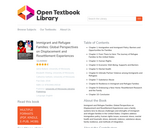
Immigrant and Refugee Families: Global Perspectives on Displacement and Resettlement Experiences uses a family systems lens to discuss challenges and strengths of immigrant and refugee families in the United States. Chapters address immigration policy, human rights issues, economic stress, mental health and traumatic stress, domestic violence, and substance abuse, among others.
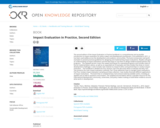
The second edition of the Impact Evaluation in Practice handbook is a comprehensive and accessible introduction to impact evaluation for policy makers and development practitioners. First published in 2011, it has been used widely across the development and academic communities. The book incorporates real-world examples to present practical guidelines for designing and implementing impact evaluations. Readers will gain an understanding of impact evaluations and the best ways to use them to design evidence-based policies and programs. The updated version covers the newest techniques for evaluating programs and includes state-of-the-art implementation advice, as well as an expanded set of examples and case studies that draw on recent development challenges. It also includes new material on research ethics and partnerships to conduct impact evaluation. The handbook is divided into four sections: Part One discusses what to evaluate and why; Part Two presents the main impact evaluation methods; Part Three addresses how to manage impact evaluations; Part Four reviews impact evaluation sampling and data collection. Case studies illustrate different applications of impact evaluations. The book links to complementary instructional material available online, including an applied case as well as questions and answers. The updated second edition will be a valuable resource for the international development community, universities, and policy makers looking to build better evidence around what works in development.
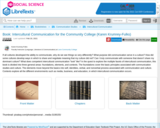
If all cultures developed the ability to communicate, why do we see things so very differently? What purpose did communication serve in a culture? How did some cultures develop ways in which to share and negotiate meaning that my culture did not? Can I truly communicate with someone that doesn’t share my dominant culture? What does competent intercultural communication “look” like? In the quest to explore the multiple facets of intercultural communication, this book is divided into three general areas: foundations, elements, and contexts. The foundations cover the basic principles associated with communication studies and culture. The elements move beyond the basics into self, identities, verbal, and nonverbal process associated with communication and culture. Contexts explore all the different environments such as media, business, and education, in which intercultural communication occurs.

International Economics: Theory and Policy is built on Steve Suranovic’s belief that students need to learn the theory and models to understand how economics works and how economists understand the world. And, that these ideas are accessible to most students if they are explained thoroughly.
So, if you are looking for an International Economics text that will prepare your PhD students while promoting serious comprehension for the non-economics major, Steve Suranovic’s International Economics: Theory and Policy is for you.
International Economics: Theory and Policy presents numerous models in some detail; not by employing advanced mathematics, but rather by walking students through a detailed description of how a model’s assumptions influence its conclusions. Then, students learn how the models connect with the real world.
Steve’s book covers positive economics to help answer the normative questions; for example, what should a country do about trade policy, or about exchange rate policy? The results from models give students insights that help us answer these questions. Thus, this text strives to explain why each model is interesting by connecting its results to some aspect of a current policy issue.
This text eliminates some needlessly difficult material while adding and elaborating on other principles. For example, the development of the relative supply/demand structure, or the presentation of offer curves, are omitted as to not go too deeply into topics that tend to confuse many students at this level.
Steve developed new approaches in this text including a simple way to present the Jones’ magnification effects, a systematic method to teach the theory of the second best, and a unique description of valid reasons to worry about trade deficits. These new approaches help students learn the concepts and models and derive conclusions from them.
If you like to take a comprehensive look at trade policies, be sure to check out the chapter on Trade Policy (7). It provides a comprehensive look at many more trade policies than are found in many of the printed textbooks on the market today.
International Economics: Theory and Policy by Steve Suranovic is intended for use in a full semester trade course, a full semester finance course, or a one semester trade/finance course.

This book is designed to be a ‘Day 0' introduction to International Relations. As a beginner's guide, it has been structured to condense the most important information into the smallest space and present that information in the most accessible way. The chapters offer a broad sweep of the basic components of International Relations and the key contemporaryissues that concern the discipline. The narrative arc forms a complete circle, taking readers from no knowledge to competency. The journey starts by examining how the international system was formed and ends by reflecting that International Relations is always adapting to events and is therefore a never-ending journey of discovery. Unlike typical textbooks, there are no boxes, charts, pictures or exercises. The philosophy underpinning this book is that these things can be a distraction. This book, like others in the E-IR Foundations series, is designed to capture attention with an engaging narrative. The chapters are short, with simple paragraphs and clear sentences placing the reader inside crucial issues and debates so they can understand how things work, and where they fit in the world around them.